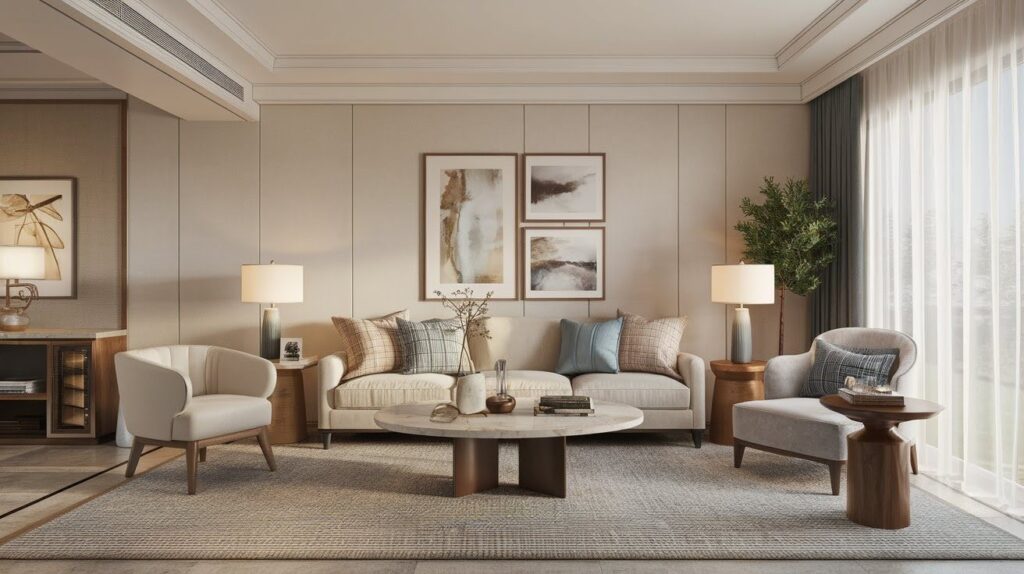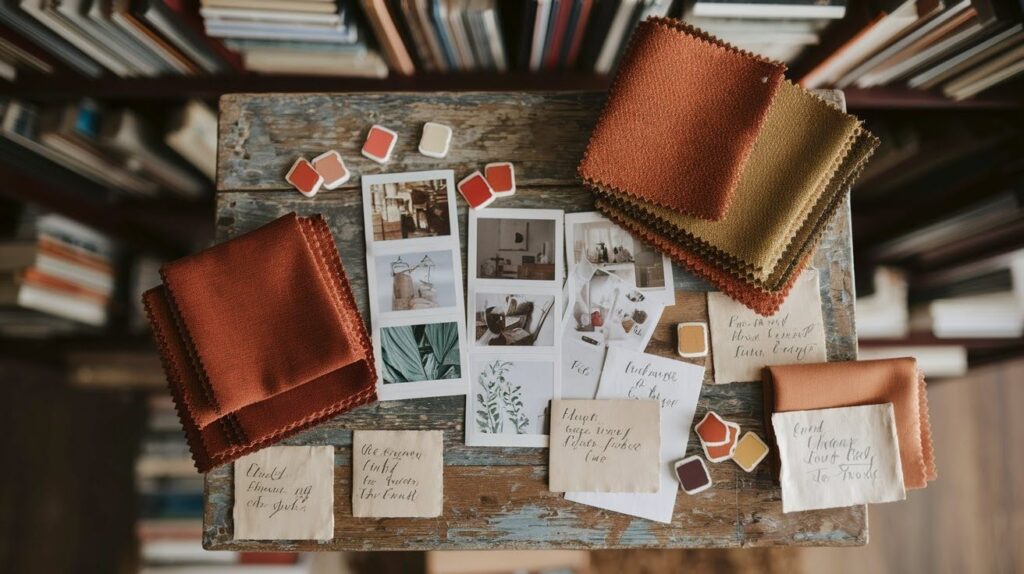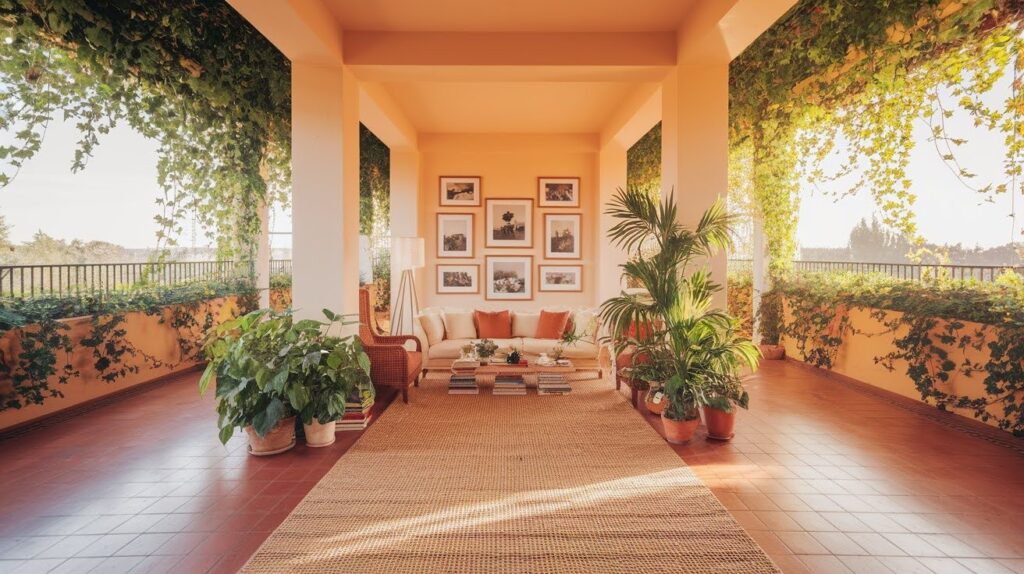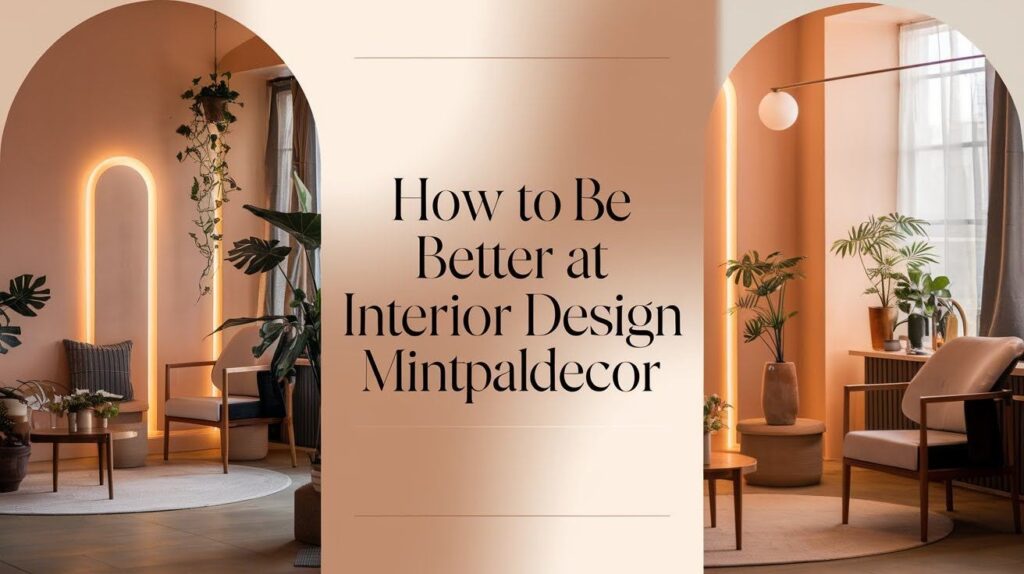Want to change your space but don’t know where to start? I get it. Interior design can feel overwhelming when you’re staring at blank rooms.
You’re about to learn exactly how to become better at interior design. This guide walks you through everything from understanding basic design principles to finding your personal style. I’ll show you how to start small with room-by-room changes and mix expensive pieces with budget finds.
Here’s what makes this different: I’ve spent years making design mistakes so you don’t have to. The strategies I’m sharing come from real experience, not just theory.
You’ll learn how to train your eye to spot good design. Plus, I’ll teach you to stay inspired without getting overwhelmed by trends.
This isn’t about copying magazine rooms. It’s about creating spaces that work for your life and budget. Ready to turn your home into a place you actually love? Let’s start with the foundations.
Master the Basics of Interior Design

Let’s start with what actually matters.
Color is your foundation. Pick three colors max for each room. One main color, one accent, and one neutral. This simple rule prevents that “rainbow explosion” look that screams amateur.
I learned this the hard way when I painted my first apartment. I used five different colors in one room. It looked like a children’s playroom instead of a relaxing bedroom.
Scale matters more than you think. A tiny rug in a big room looks lost. A massive couch in a small space feels cramped. Match your furniture size to your room size.
Lighting changes everything. Overhead lights alone make spaces feel harsh. Add table lamps, floor lamps, or string lights. Your room instantly feels warmer.
Want to know something helpful? The 60-30-10 rule works every time. Use your main color for 60% of the room, your secondary for 30%, and your accent for 10%.
Texture adds depth without cost. Mix smooth and rough surfaces. Combine wood with metal. Add soft pillows to hard furniture. Your space becomes more interesting.
Build Your Personal Style with MintpalDecor Insights

Your style should reflect you, not magazine pages.
Start by collecting what you love. Save images that make you stop scrolling. Don’t worry about naming the style yet. Just gather what speaks to you.
I did this for months before decorating my current home. I collected images on Pinterest and realized I kept saving rooms with white walls and natural wood. That told me everything I needed to know about my style.
Notice patterns in your collection. Do you prefer clean lines or curved shapes? Bright colors or muted tones? These patterns reveal your natural style.
Test before you commit. Buy one small item in your potential style. Live with it for a week. If you still love it, you’re on the right track.
Here’s what I’ve learned: mixing styles creates the most interesting spaces. Pure minimalists feel cold. Pure bohemian feels chaotic. But minimalist furniture with bohemian textiles? Great balance.
Your lifestyle shapes your style. Got kids? White furniture might not work. Love hosting? You need flexible seating. Work from home? Comfort beats looks every time.
Start Small: Room-by-Room Change Strategy

Big changes start with small wins.
Pick your easiest room first. Usually that’s a bedroom or bathroom. Success here builds confidence for harder spaces. Focus on one wall. Paint it a different color. Add art. Install shelves. This accent wall becomes your room’s focal point.
Rearrange before you buy. Move your existing furniture around. Try different layouts. You might find your space works better than you thought.
But wait. There’s a trap here.
Don’t jump to the next room too quickly. Live with your changes for at least two weeks. This prevents that “everything looks the same” problem. I made this mistake in my first house. I decorated three rooms in one month. They all ended up looking identical because I didn’t give myself time to understand what worked.
Document your progress. Take before and after photos. You’ll see improvements you missed day-to-day. Plus, you’ll learn what works for future projects.
Learn to Mix High & Low: MintpalDecor’s Budget Design Hacks

Great design doesn’t require great wealth. It requires smart choices.
Invest in pieces you touch daily. Your mattress, office chair, and dining table deserve your budget. You’ll notice the quality here.
Save on decorative items. Pillows, artwork, and vases can come from budget stores. Change them seasonally without guilt.
Thrift vintage furniture, buy new mattresses. Old dressers have character and solid construction. But health items like mattresses and pillows should be fresh.
Here’s something that works: paint changes everything. That ugly wooden dresser? Sand it lightly and paint it white. Suddenly it looks custom and expensive.
I found a beat-up dresser at a garage sale for $15. After sanding and painting, people ask where I bought my “expensive” bedroom furniture. Shop your own home first. Move items between rooms. That living room lamp might be perfect in your bedroom. Free makeover.
DIY the small stuff. Frame your own art. Sew simple pillows. Build basic shelves. Save professional help for plumbing and electrical work.
Train Your Eye: What Makes a Space “Well-Designed”?

Good design has patterns you can learn to spot.
Balance creates calm. Heavy furniture on one side needs visual weight on the other. This might be a large plant, artwork, or built-in shelving. Repetition ties rooms together. Use your accent color in three places minimum. Repeat materials like wood or metal throughout the space.
White space prevents overwhelm. Empty areas let your eyes rest. Don’t fill every corner or cover every wall. Look at spaces you love in magazines or online. What do they have in common?
Natural elements add life. Plants, wood, stone, or water features make artificial spaces feel organic. Even one plant makes a difference. Personal items tell your story. Family photos, travel souvenirs, or hobby supplies make spaces feel lived-in rather than staged.
My favorite corner has a vintage camera from my grandfather and books I actually read. Guests always gravitate toward that spot because it feels real. Good flow means easy movement. You shouldn’t bump into furniture walking through a room. Clear pathways feel more spacious.
Stay Inspired and Keep Evolving
Design is a process, not a destination.
Follow accounts that match your style. But limit yourself to five max. Too much inspiration becomes overwhelming noise. Visit showrooms and model homes. See how professionals arrange furniture and use color. Take photos of ideas you want to try.
Change small things seasonally. Swap pillow covers, rotate artwork, or rearrange accessories. Your space stays fresh without major expense.
Remember this: your space should change as you do. What worked in your twenties might not fit your forties. That’s normal and healthy.
Trust your instincts over trends. If everyone says subway tile is outdated but you love it, use it anyway. Trends change, but you live in your space daily. Document what works. Keep notes about successful combinations, paint colors you love, and measurements that fit perfectly. Future projects become easier.
Your space should make you happy when you walk through the door. If it doesn’t, change something. Even small adjustments can shift how a room feels. Start with one room, one wall, or even one corner. Perfect isn’t the goal. Better is enough.
Ready to begin? Pick your easiest room and make one small change today. Your future self will thank you.
Conclusion
You now have everything you need to become better at interior design. The techniques in this guide work for any budget or skill level. Start with understanding basic color and lighting principles.
Remember what matters most: your space should reflect you. Don’t copy trends that don’t match your lifestyle. Mix high and low pieces to create interesting rooms without breaking your budget.
Begin small and build confidence. Pick one room and make one change this week. Paint a wall, rearrange furniture, or add new lighting. Document your progress with photos.
Most importantly, trust your instincts. Good design comes from understanding what makes you comfortable at home. Your perfect space is waiting. Take the first step today.
Frequently Asked Questions
How long does it take to redesign a room?
A simple room makeover can happen in one weekend with rearranging and new accessories. Major changes like painting, new furniture, or renovations typically take 2-4 weeks depending on your budget and timeline.
What’s the biggest mistake beginners make in interior design?
Most beginners try to do everything at once and choose items that don’t work together. Start with one focal point and build around it slowly, ensuring each new piece complements what you already have.
How much should I budget for my first room makeover?
You can change a room for $200-500 with paint, accessories, and smart shopping. Invest 60% of your budget in one statement piece like a rug or artwork, then fill in with smaller budget items.
Do I need to hire a professional interior designer?
Professional designers help with complex layouts and major renovations, but you can handle most room updates yourself. Start with DIY projects to build confidence, then consider professional help for kitchens or structural changes.
How do I know if my color choices will work together?
Stick to the 60-30-10 rule with colors that appear together in nature or a favorite piece of art. Test paint colors in different lighting throughout the day before committing to full walls.

